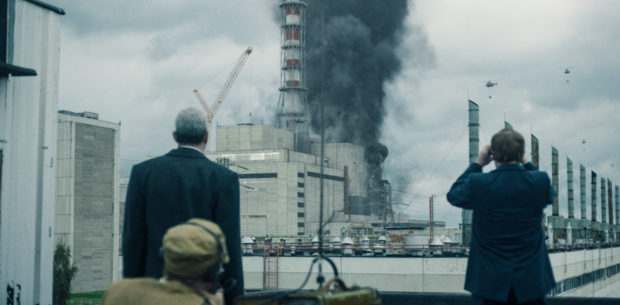
The creator and writer of hit drama Chernobyl has called for people visiting the site to treat it with respect after photos from the area were posted on social media.
The success of the five-part series, which critics have hailed as an instant TV classic, has led to a rise in tourism to the site of the nuclear reactor disaster in 1986.
Around 1,000 square metres of Ukraine and Belarus territory around the former power station is designated as the Exclusion Zone, and access to the radioactively contaminated area is limited.
Trips are offered to the Zone by a number of companies in the Ukraine, who have seen uptake surge after the series piqued the interests of people worldwide.
But with this increase in visitor activity has come a number of social media posts that have been deemed disrespectful given the historical context of the area.
A browse of the location tag on Instagram for the Zone shows a number of selfies and posed photos with the abandoned settlements of the area, homes that people had to flee to save their lives.
A viral post by Twitter user Bruno Zupan compiled several such images, which included a photoshoot of a woman in her underwear.
The famous abandoned ferris wheel also proved to be a popular place to pose for a photo.
Meanwhile in Chernobyl: Instagram influencers flocking to the site of the disaster. pic.twitter.com/LnRukoLirQ
— Bruno Zupan (@komacore) June 9, 2019
Mazin took to Twitter to condemn the images, while also saying that he was happy that more people were visiting.
He wrote: “It’s wonderful that #ChernobylHBO has inspired a wave of tourism to the Zone of Exclusion. But yes, I’ve seen the photos going around.
“If you visit, please remember that a terrible tragedy occurred there. Comport yourselves with respect for all who suffered and sacrificed.”
Chernobyl is among many sites across the world where tragedies and atrocities have occurred that have had a problem with tourists taking inappropriate pictures.
Earlier this year, the Auschwitz Museum appealed to visitors to respect the site rather than pose for pictures on the rail tracks leading in.
A spokesperson said: “Remember you are at the site where over one million people were killed. Respect their memory.”
When you come to @AuschwitzMuseum remember you are at the site where over 1 million people were killed. Respect their memory. There are better places to learn how to walk on a balance beam than the site which symbolizes deportation of hundreds of thousands to their deaths. pic.twitter.com/TxJk9FgxWl
— Auschwitz Memorial (@AuschwitzMuseum) March 20, 2019
Elsewhere, Israeli artist Shahak Shapira criticised “goofy pictures” being taken at Berlin’s Memorial to the Murdered Jews of Europe.
To demonstrate his point, he created a project called “Yolocaust” which compiled images from Facebook, Instagram, Tinder, and Grindr with real footage from concentration camps.
In New York, many have also spoken out against smiling selfies being taken at the 9/11 memorial.
Official records show that 31 people died in the accident at Chernobyl, but the real number from the incident and its aftermath is estimated to be in the tens of thousands.
Some estimates even stretch to over a million, with the long term health impacts of exposure to radiation in the area and beyond shortening many lives.
Mazin said: “There is no question that it took an enormous number of lives and it also shortened an enormous number of lives, particularly in the case of children. The rates of thyroid cancer skyrocketed in Belarus and Ukraine shortly after.”

Enjoy the convenience of having The Sunday Post delivered as a digital ePaper straight to your smartphone, tablet or computer.
Subscribe for only £5.49 a month and enjoy all the benefits of the printed paper as a digital replica.
Subscribe